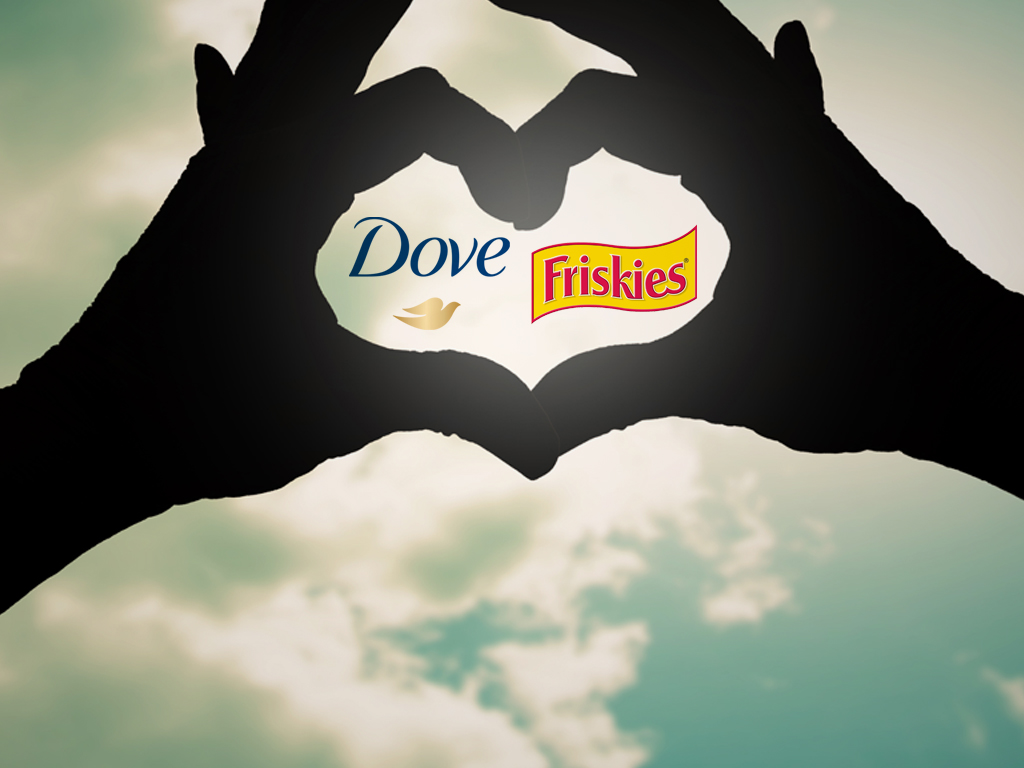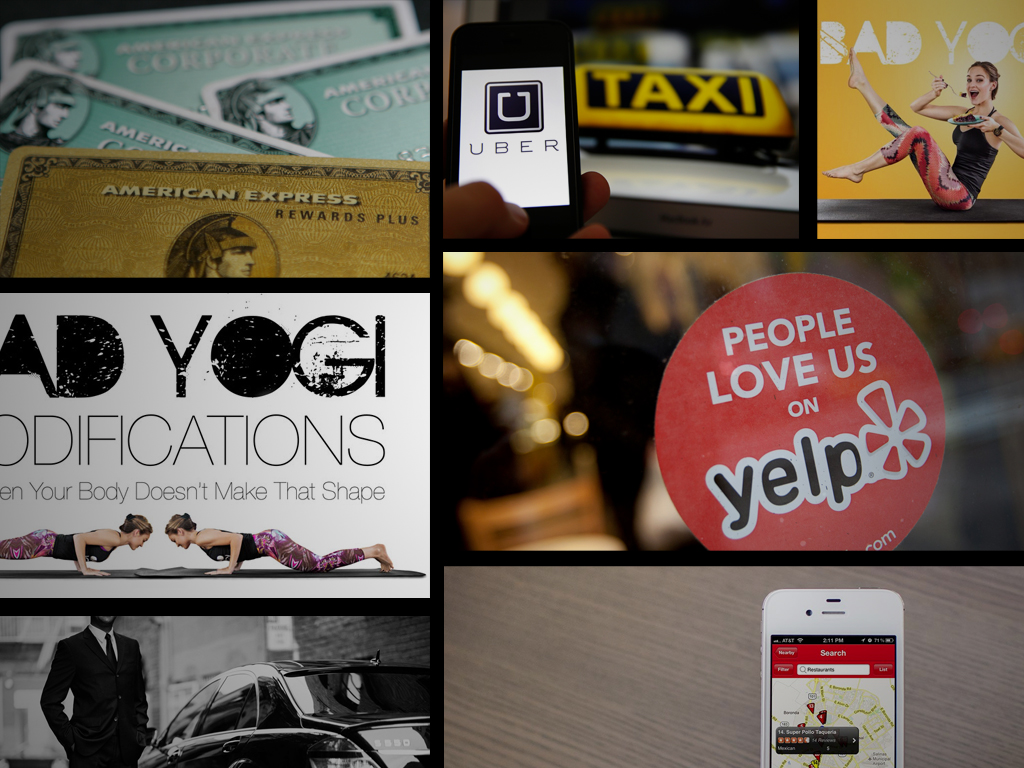The Aflac Duck has rubbed elbows with Yogi Berra, Wayne Newton and Chevy Chase. 9Lives’ Morris the cat was in a movie with Burt Reynolds, had his own personal secretary and received marriage proposals from felines and humans. And the Pillsbury Doughboy has moonlighted as an opera singer, rap artist, rock star, poet, painter, ballet dancer, skydiver and skateboarder. That’s because these figures are more than just brand assets. So how and why have they accomplished this feat and remained relevant to consumers? And what can other brands learn from them?
In September, Skippy Peanut Butter launched its Skippy Yippee marketing campaign to “spread yippee to peanut butter lovers everywhere,” including interactive components on peanutbutter.com, an online Fun Button and a 30-second Fun Factory TV spot highlighting how fun gets into Skippy peanut butter, along with The Fun Nut, a happy peanut on Twitter that the brand says extends its yippee messaging and, as of December 11, has 12,000 followers – which is nearly quadruple that of @Skippy’s 3,200.
Whether the Fun Nut becomes a beloved cultural icon remains to be seen, but the fact remains that the most successful mascots become household names and incredibly powerful brand assets.
Or, as Professor Bernd Schmitt, director of the Center on Global Brand Leadership at Columbia Business School, puts it: “Mascots are so powerful because they provide an emotional connection with the consumer and create a human face for the brand.”
Here’s a look at 20 of the most powerful brand mascots and how and why they have endured with consumers.
Flo (Progressive Insurance)

TWITTER: @itsflo – 30,500 followers (Progressive has 35,000 followers)
FACEBOOK: 5.4 million likes
HISTORY: Flo first appeared in 2008, in a commercial called “Checkout.”
WHY THE BRAND CHOSE THIS MASCOT: “Our goal was to create a ‘store’ that made shopping for insurance a pleasant experience for the customer,” says Progressive rep Steve Kaczynski. “Flo was the ideal clerk to staff the store. She’s quirky, fun and engaging. She’s the type of person you’d want to work with if you were purchasing insurance.”
MILESTONES: Flo recently starred in her 100th ad, as well as in a spot with Cleveland Cavaliers star LeBron James.
UPDATES: “Flo just hit her 100th ad, a huge accomplishment in the advertising industry. That doesn’t happen unless you evolve the campaign,” Kaczynski says. “Early on our ads just featured Flo and a customer, with a quick joke. We pivoted our strategy in the last few years to treat these commercials like a hit network show, rather than an advertising campaign. By introducing different elements you’d see in a show – like flashbacks, foil characters, set changes and spinoffs – we’ve been able to keep the campaign strong.”
ADDITIONAL COMMENT: “The beautiful part about Flo is she connects to all kinds of audiences. Our numbers show she has an appeal across all demographics,” Kaczynski says. “People like Flo because they can relate to her. She’s a normal person, not some larger-than-life glamorous celebrity. She’s helped us extend our brand reach to places where it never used to play – she’s become a pop culture icon.”
FUN DIGITAL EXTRAS TO HELP THE BRAND ENGAGE CONSUMERS: The Progressive site features a Dress Like Flo guide for Halloween.
Morris the Cat (9Lives)

TWITTER: @MorrisApproved – 1,600 followers
FACEBOOK: 245,000 likes
HISTORY: Per the Hinsdale, Illinois Humane Society, Morris, previously named Lucky, was adopted in 1968. Staff members noticed his “charming” personality and contacted an animal trainer who worked for Leo Burnett. When Morris went to the casting call for the 9Lives commercial, “He jumped on the table… and he walked right up to the art director, the big cheese, and bumped him in the head. And then Morris just sat back,” the trainer said in 1995. “The art director said, ‘This is the Clark Gable of cats.’” And, from 1969 to 1978, Morris completed 58 commercials.
MILESTONES: Also per Hinsdale, Morris received so much fan mail, he had his own personal secretary. And, oddly enough, he received marriage proposals from “felines and humans alike.” He also starred in the movie “Shamus” with Burt Reynolds and won the Patsy, or the animal equivalent of the Oscar, in 1972 and 1973. Morris wrote three books and was also reportedly was the prototype for Garfield the cat, which was created by artist Jim Davis. Upon his death in July 1978, Morris’ obituary appeared in newspapers worldwide.
UPDATE/FUN DIGITAL EXTRAS: 9Lives recently brought Morris back in its Cat’s Eye View campaign, a series of videos from the cat’s perspective thanks to the inclusion of wearable technology. The brand says it is “rebooting him as a pop culture pundit and ‘charmingly choosy’ foil to famous Internet felines like Grumpy Cat and Lil’ Bub.” The brand also launched profiles for Morris on Twitter and Instagram, where, the brand says, “Morris comments on trending topics like Taylor Swift’s new album release.”
The GEICO Gecko

TWITTER: @TheGEICOGecko – 20,4oo followers (versus @Geico’s 34,000)
FACEBOOK: 314,000 likes
HISTORY: Per Geico, the idea for the Gecko came from a brainstorming session with the brand’s ad agency, the Martin Agency, because “Geico” was often mispronounced “Gecko.” From there, the Geico Gecko made his debut during the 1999 to 2000 television season.
WHY THE BRAND CHOSE THIS MASCOT: Per Geico, successful ad campaigns from the past have proven animals create a strong connection between customers and companies. In addition, Geico says the Gecko’s “constant good cheer, insatiable need to meet people and natural tenacity all make him perfectly suited to help people find outstanding values on insurance.”
BRAND COMMENT: A Geico rep says: You should know that deep down the Gecko is a very humble creature and really doesn’t try to publicize himself or his apparent success.
FUN DIGITAL EXTRAS: Consumers can access downloadable ringtones and Gecko merchandise on the Geico site.
The Aflac Duck

TWITTER: @aflacduck – 62,000 followers (versus 21,000 for @Aflac)
FACEBOOK: 531,000 likes
HISTORY: Per Aflac, the Aflac Duck debuted on January 1, 2000, with the television commercial “Park Bench.”
BRAND COMMENT: “When a little white duck with little to say, but a lot of personality, stormed upon the scene, it made advertising history and transformed Aflac into an international powerhouse,” Aflac says. “Aflac’s name recognition soared from 11 percent to 94 percent where it remains today.”
MILESTONES: The Aflac Duck has starred in commercials with Yogi Berra, Wayne Newton, Chevy Chase, Melania Trump, and Carl Edwards. The Duck also appeared in the movie Lemony Snicket’s A Series of Unfortunate Events. And, in 2011, the Aflac Duck made his debut in the Macy’s Thanksgiving Parade.
UPDATES: In 2011, comedian Gilbert Gottfried was fired as the voice of the Duck and the brand launched a nationwide casting call to find a new voice.
Cap’n Crunch

TWITTER: @RealCapnCrunch – 36,000 followers
FACEBOOK: 342,000 likes
HISTORY: First appearing in September 1963, a Cap’n Crunch rep says his full name is Horatio Magellan Crunch and he lives on a boat, the S.S Guppy. The Cap’n was temporarily removed from packaging as part of the “Where’s the Cap’n?” promotion in 1985 and in 2000.
BRAND COMMENT: “We found that our consumer target [adults] have a strong affinity for the Cap’n mascot,” the rep says. “As a result, we’ve engaged with consumers at places like SXSW, through a late-night talk show on YouTube and even leveraged the mascot to generate buzz and media attention by bringing him to media outlets and having him mingle with celebrities.”
FUN DIGITAL EXTRAS: He is the host of The Cap’n Crunch Show on YouTube.
Charlie the Tuna (Starkist)

TWITTER: @StarKistCharlie – 3,100 followers
HISTORY: Per the StarKist website, StarKist’s Charlie the Tuna was created in 1961 and was the “brain-fish” of “character creators” and the Leo Burnett agency. Initial character design for animation was done by the creative animation studio behind the Pink Panther. Charlie went on to star in more than 80 commercials. A rep says Charlie is based off a real hipster character named Henry Nemo, who is thought to be responsible for inventing jive talk.
MILESTONES: Per a timeline on the website, in 1991, Charlie met a love interest, Premia, to help introduce StarKist’s premium Chunk Light Tuna, but “the relationship is short lived.”
UPDATES: A rep says “Charlie the Tuna has been part of the StarKist brand” for more than five decades, but reports say Charlie returned to TV ads after a 30-year hiatus in January 2014 “as a classic hipster with a fresh new look.” The “jive-talking tuna” returned with “modern 3D animation that still harkens back to the classic character that was developed more than 50 years ago,” and still includes his iconic catchphrase: ‘Tell ’em Charlie sent ya!’” a release said.
BRAND COMMENT: “Since Charlie’s debut in 1961, his red hat, trendy glasses and cool mannerisms have made him a true pop culture icon, and now for the first time in more than a decade, Charlie is reclaiming his starring role in our advertising campaign in a big way,” said Mike Brookhart, director of marketing at StarKist, in the release.
FUN FACTS: Charlie has a lot memorabilia – phones, cameras, presidential decals and more, the rep says.
Mr. Peanut (Planters)

TWITTER: @MrPeanut – 3,300 followers
FACEBOOK: Nearly 700,000 likes
HISTORY: Mr. Peanut made his first appearance in 1916.
MILESTONES: In 2010, Mr. Peanut spoke for the first time in 94 years in a series of stop-motion animation commercials, which debuted on his Facebook page. He has since been voiced by Robert Downey Jr. and Bill Hader.
FUN EXTRAS: In 2011, Planters launched the Nutmobile, a peanut-shaped vehicle fueled by biodiesel and powered with solar energy.
Green Giant

TWITTER: @GreenGiant – 24,000 followers
FACEBOOK: 1.1 million likes
HISTORY: The Green Giant made his first appearance in the 1920s.
WHY THE BRAND CHOSE THIS MASCOT: He was named after a particularly large variety of pea harvested and sold by the company, per the Green Giant website.
MILESTONES: In 1950, he became the symbol for the entire company, when the Minnesota Valley Company changed its name to the Green Giant Company.
UPDATES: Also per the website, the Green Giant has “evolved into a friendlier – and greener – character,” over the years.
FUN DIGITAL EXTRAS: The brand has been involved in an anti-bullying initiative called Raise a Giant.
Mr. Clean

TWITTER: @RealMrClean – 19,000 followers
FACEBOOK: Nearly 1 million likes
HISTORY: Per the Mr. Clean website, Mr. Clean first appeared in 1957 as “a muscular, tan, bald man who cleans things very well” and his jingle later went on to become the longest-running in television history.
RECENT MILESTONES: Thanks to the “Give Mr. Clean a First Name” promotion in 1962, he was dubbed “Veritably.” In 2004, he appeared both at P. Diddy’s annual White Party in the Hamptons and the Video Music Awards. Two years later, he gathered an army of lookalikes to clean up after the Guinness record-setting World’s Largest Gingerbread House in the Mall of America.
FUN DIGITAL EXTRAS: Mr. Clean is a guest curator for music streaming service Songza. He also parodied Kim Kardashian’s #BreaktheInternet image.
Pillsbury Doughboy

TWITTER: @Pillsbury – 102,000 followers
FACEBOOK: 3 million likes
MASCOT HISTORY: Per General Mills, the Pillsbury Doughboy was created in 1965 by a copywriter at Leo Burnett who opened a can of refrigerated dough and “envisioned an image of a doughboy popping out.” From the beginning, he has been dressed in a chef’s hat bearing the Pillsbury logo as well as a white neckerchief. The initial doll cost $16,000 to develop and had five bodies and 15 heads to create numerous looks and positions. Prior to computerization, it took 24 individual shots for every one second of commercial for the Doughboy’s stop-motion animation, General Mills says.
WHY THE BRAND CHOSE THIS MASCOT: He was named “Poppin’ Fresh,” which General Mills says “[personifies] the product’s freshness and quality.” Within three years of his debut in 1965 in a crescent roll commercial, the Doughboy had an 87 percent recognition factor among consumers, General Mills says.
FUN FACTS: Paul Frees, the voice of Boris Badenov in “The Adventures of Rocky and Bullwinkle” was tapped as the first voice. His first words were, “Hi! I’m Poppin’ Fresh, the Pillsbury Doughboy,” which was followed by, “Nothin’ says lovin’ like bakin’ in the oven, and Pillsbury says it best.” When Frees died in 1986, Jeff Bergman, the voice of Charlie the Tuna, took over. And, currently, JoBe Cerny portrays the Doughboy.
MILESTONES: As of 1998, General Mills says the Doughboy received 200 fan letters a week, and Pillsbury received 1,500 requests for autographed photos. He has also been in the Macy’s Thanksgiving Day Parade.
UPDATES: In the late 1960s and early 1970s, he was seen as a helper, friend and instructor to family cooks, but he has since been featured as an opera singer, a rap artist, a rock star, a poet, a painter, a ballet dancer, a skydiver and skateboarder. He has also been seen playing the harmonica, accordion, bugle, electric guitar and violin, General Mills says.
Tony the Tiger (Frosted Flakes)

TWITTER: @realtonytiger – 17,500 followers.
FACEBOOK: Frosted Flakes has 1.1 million likes
MASCOT HISTORY: In 1952, the character of Tony was voted the favorite placed on packages for a new cereal, Kellogg’s Sugar Frosted Flakes of Corn, a brand rep says. Three other characters – Katy the Kangaroo, Elmo the Elephant and Newt the Gnu – also appeared. In 1953, Leo Burnett further developed Tony for a four-color ad in the August issue of Life magazine.
RECENT MILESTONES: Tony made headlines in November when an ad tied to Atlanta Pride telling consumers to “wear your stripes with pride,” received criticism from some groups.
FUN DIGITAL EXTRAS THE BRAND USES TO ENGAGE: Tony posts GIFs such as this and this, as well as #TBT messaging. The brand also sells personalized boxes of Frosted Flakes.
Ronald McDonald (McDonald’s)

TWITTER: @McDonalds, which encourages users to tweet #RonaldMcDonald
MASCOT HISTORY: Ronald McDonald made his first appearance in 1963 in a regional television commercial. And, beginning in 1966, he officially became the “smiling, friendly face and spokesman of McDonald’s,” says McDonald’s rep Steve Mazeika.
WHY THE BRAND CHOSE THIS MASCOT: “Ronald brings to life the fun of the McDonald’s brand. In addition to being the smiling, friendly face of McDonald’s, he embodies the company’s dedication to the happiness and well-being of people worldwide,” Mazeika says.
MILESTONES: Over the last year, Ronald has brought indoor snow sledding to a Malaysian mall, broken world records at the International Redhead Festival, and clowned around in Rio during the World Cup, the rep says.
UPDATES: Ronald’s attire has evolved over the years, including an update in 2014 in which he swapped out his yellow one-piece jumpsuit for yellow cargo pants, accompanied by a red-and-white striped rugby shirt, a red blazer with an “M” on the front pocket, and his signature on the back. To roll with the times, his traditional bowtie and his new red blazer will be reserved for special occasions, McDonald’s says. His red shoes and red-and-white striped socks remain the same. For everyday occasions, Ronald wears a new yellow vest to match his yellow cargo pants and rugby shirt. “The latest clothing reflects the new role and changing times,” the brand says.
FUN DIGITAL EXTRAS: Ronald just launched his own Instagram account, which, the brand says, “is perfect for sharing all of his fun adventures around the world with friends and followers on social media.” He also jumped out of an airplane in a recent Instagram video stunt.
Energizer Bunny

TWITTER: @EnergizerBunny – 8,900 followers
FACEBOOK: 377,000 likes
MASCOT HISTORY: Per Energizer, the Bunny first appeared in a TV spot in 1989.
MILESTONES: In 2006, “energizer bunny” was added to the Oxford English Dictionary as “a persistent or indefatigable person or phenomenon.” In 2009, the Bunny appeared in the Macy’s Thanksgiving Day Parade.
FUN DIGITAL EXTRAS: The Energizer Bunny tweets #TBT images and did the Ice Bucket Challenge. He also shares stop-motion videos.
Maytag Repairman

TWITTER: @TheMaytagMan – 12,600 followers
FACEBOOK: 131,000 likes
MASCOT HISTORY: Per the Globe and Mail, Maytag introduced the Repairman as “the loneliest guy in town” in 1967 in yet another campaign created by Leo Burnett. Jesse White played the role for more than two decades, filming 68 commercials. He was subsequently played by three other actors until his most recent update earlier this year.
UPDATES: In January, Maytag launched a campaign in which it transformed the Maytag Repairman into the Maytag Man, a younger, slimmer, hunkier version who plays the role of the machine and the “human embodiment of the brand’s core values of reliability, durability and power.”
WHY THE BRAND CHOSE THIS MASCOT: “The Maytag Man is a creative interpretation of our motto, ‘What’s Inside Matters,’ illustrating all the human and relatable virtues that exist inside appliances – performance, dependability, power,” said Beck. “We want to recognize and draw a connection to individuals who work with strength, resilience and persistence, just like our appliances, to get the job done.”
FUN DIGITAL EXTRAS THE BRAND USES TO ENGAGE: The brand launched a new Twitter presence, @TheMaytagMan after the revamp. He has been known to tweet memes, GIFs and even for Talk Like a Pirate Day.
Morton Salt Girl

TWITTER: @mortonsalt – 1,100 followers
FACEBOOK: 183,000
MASCOT HISTORY: In 1914, Morton hired advertising agency N.W. Ayer and Company to develop a marketing campaign that would promote the anti-caking properties of their salt.
WHY THE BRAND CHOSE THIS MASCOT: The Morton Salt Girl and the brand’s “When It Rains It Pours” slogan were created to illustrate that Morton Salt could flow freely even in damp weather. According to a press release, the little girl with the umbrella was introduced on the familiar blue round package of Morton Salt and in a print ad in the October issue of Good Housekeeping.
MILESTONES: The Morton Salt Girl recently celebrated her 100th birthday.
UPDATES: Her look has changed over the years to include the color yellow in 1941 and a shorter dress in 1968. To coincide with her 100th birthday in 2014, she was updated again with “cleaner, simplified linework,” the brand says.
FUN DIGITAL EXTRAS: The Morton Salt Girl has her own Pinterest board and the brand pushed a label design contest earlier this year.
Kool-Aid Man

FACEBOOK: 123,000 likes
MASCOT HISTORY: Per the Hastings Museum in Kool-Aid’s birthplace of Hastings, Nebraska, a Smiling Face Pitcher was introduced shortly after the brand was sold to General Foods in 1953 and when Kraft Foods acquired General Foods, they “refined the Kool-Aid pitcher into Kool-Aid Man.”
FUN FACTS: Kool-Aid is the official soft drink of Nebraska.
ANY UPDATES: In 2013, Kool-Aid Man got “a brand new modern look and distinctive voice,” a press release said. He also became CGI-generated and was given “his own characteristic sound, expanded vocabulary and developed personality.”
FUN DIGITAL EXTRAS: In June, Kool-Aid launched an Android- and iOS-enabled Kool-Aid Man PhotoBomb app, which enables fans to superimpose different images of Kool-Aid Man into their personal photos. Per Google Play, the app has between 10,000 and 50,000 downloads.
Brawny Man

TWITTER: @Brawny – 17,500 followers
FACEBOOK: 863,000 likes
MASCOT HISTORY: Per a press release, the Brawny Man first made his debut in 1974.
WHY THE BRAND CHOSE THIS MASCOT: “Through last year’s contest and other consumer feedback, we discovered how clearly our core consumers identify the Brawny Man as someone who is strong in body and character, yet very sensitive,” said Michael Burandt, Georgia-Pacific executive vice president and president of North American consumer products, in a press release.
UPDATES: A 2003 press release says the Brawny Man was transformed from blonde and mustached to dark-haired, dimpled and clean-shaven, but his plaid shirt remained.
FUN DIGITAL EXTRAS: The Brawny Man shares memes, such as this and this. He also has a Dress like the Brawny Man promotion on Tumblr and worked with the Movember Foundation by modeling new mustaches each week in order to raise awareness about men’s cancers.
Gorton’s Fisherman

TWITTER: @gortonsseafood – 6,100 followers.
FACEBOOK: 162,000 likes
MASCOT HISTORY: In 1975, the Gorton’s Fisherman appeared on TV for the first time.
WHY THE BRAND CHOSE THIS MASCOT: According to Gorton’s, the Fisherman represents “the unwavering dedication of hundreds of fishermen past and present whose lives have centered around a passion for great seafood and who have been proud to call the rugged and beautiful town of Gloucester their homeport.”
FUN DIGITAL EXTRAS: The brand is active on Pinterest, including a Trust the Gorton’s Fisherman board.
Captain Morgan

TWITTER: @CaptainMorganUS – 16,500 followers
MASCOT HISTORY: According to a brand rep, Captain Henry Morgan has been on the brand’s bottle since the early 1970s. He was a real-life character who one of the most infamous buccaneers of the 17th century, a rep says. “From his real-life adventures on the high seas to achieving knighthood and becoming the Governor of Jamaica, it is his life that continues to inspire the Captain Morgan Rum Company, which was established in 1945,” the rep adds.
WHY THE BRAND CHOSE THIS MASCOT: Captain Morgan “possessed an adventurous spirit that was unmatched and his legacy continues to inspire the Captain Morgan Rum Company, its innovation and passion for adventure,” the rep says.
FUN DIGITAL EXTRAS THE BRAND USES TO ENGAGE: The Captain tweets #OneSentenceBedtimeStories and memes. He is also active on Instagram and Pinterest.
The Most Interesting Man in the World (Dos Equis)

TWITTER: @DosEquis – 64,500 followers
FACEBOOK: 370,000 likes
MASCOT HISTORY: In 2006, Dos Equis debuted the Most Interesting Man in the World.
WHY THE BRAND CHOSE THIS MASCOT: According to a press release, the campaign seeks to “help premium beer and spirits drinkers in their quest to live more interesting lives, reinforced by his catchphrase: ‘Stay thirsty my friends.’” And, Dos Equis says, the Most Interesting Man “appeals to the key Dos Equis consumer — adult men who live or aspire to live ‘interesting’ lives” with his “unmatched suave and distinguished charisma.”
Or, as a rep puts it, “When we set out to create the campaign, we decided to never use a mascot or a spokesman. Rather, we wanted to create a man who was interesting, who just so happened to have an affinity for our brand.” T
he Most Interesting Man allows young men to see not a competitor to themselves, but rather a man that they could be at some point in the future. Someone they could aspire to be like, if they made the right choices in life, the rep adds.
In addition, the rep says, “We knew that in order to stand out in the crowded beer category that we needed to be different and more interesting. When casting, we had a general sense of what we were looking for. But we didn’t really know what he’d look like until our actor walked through the door. He just had ‘it.’ And there he was.”
BRAND COMMENT: The rep says the brand defines its target as social explorers, or men 21 to 34, who have a natural sense of adventure and a healthy appetite for novelty and experimentation.
“Our guy enjoys doing things that are a bit “off the beaten path,” has a lot of friends but tends to be a leader, rather than a follower,” the rep says. “There’s a funny thing about our target: They like interesting guys who are doing amazing things, but they don’t want to be compared to people their age who are doing interesting and amazing things. Because instead of looking at their peers who are good looking and successful in awe, they look at them with disdain: a better-than-themselves-mirror-image that will steal their thunder and their girlfriend.”
Which brand mascots do you think are the most powerful, and why?




